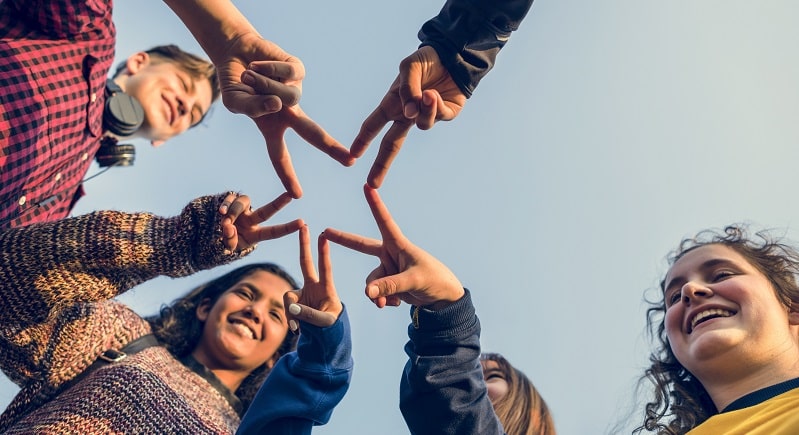What do kids need?
That simple question is one that I ask myself daily as a parent. And I’m often overwhelmed by the litany of answers that friends, family, and the internet are willing to serve up on any given day.
That’s why I was relieved and excited when I found out that my colleague and friend Stephanie Malia Krauss—an author, researcher, educator, social worker, and mother—had written her latest book, Whole Child, Whole Life: 10 Ways to Help Kids Live, Learn, and Thrive, which comes out May 30th.
The book takes a very practical approach to arming readers with strategies and tactics anchored in the expansive research on whole child development. I read it both as someone thinking about reimagining education systems and as a parent of two pandemic babies coming into the world.
The book broadens the perspective of any reader like myself recovering from the challenges of pandemic-parenting and schooling. Krauss widens your aperture beyond the immediate logistical hurdles that many households and schools are still juggling in order to consider 10 practices that matter to supporting healthy, thriving childhoods—academically and beyond.
Stephanie and I sat down to talk about Whole Child, Whole Life, and, in particular, how both families and schools can attend to the central role that relationships play in children’s “well-being and well-becoming.” We discussed not only on a set of individual practices that support wellness, but also the ways in which education systems must include relationship-building at every level in order to be whole and, in turn, attend to the whole child. You can listen to our full conversation below. Here’s an overview of what we chatted about:
- {Minute 5:20} Permission to acknowledge the primacy of relationships. Early in the book, Stephanie writes “I have studied child and youth well-being for more than two decades and across all the research I’ve read, the most common reason why kids thrive is the presence of nurturing and healthy relationships. Healthy relationships are a protective factor against adversity, they help us learn, they are where we experience and process life, and often they are the spaces where we derive purpose and meaning.” In light of the overwhelming research on the primacy of relationships, Stephanie and I discussed what it would look like to start to truly prioritize relationships—that is, not just leave relationships to evolve organically but, instead, design our schools and homes in ways that ensure healthy relationships are constantly being built. As Stephanie put it, “nourishing relationships have to be nourished.” Even more importantly, Stephanie described the importance of giving ourselves permission to acknowledge that relationships are valuable and that time spent in relationships is valuable.
- {Minute 13:10} Becoming cartographers of children’s context and connections. Next, we discussed the powerful practice of eco-mapping from Stephanie’s social work background, drawing on the research from human development expert Urie Bronfenbrenner. In the book, Stephanie writes, “We must become cartographers of children’s contexts and connections. … Mapping is taking time to learn about and plot the people and places young people interact with. As we map, we put kids at the center of their lives, and we learn their landscape by moving outward until we have drawn a constellation of the people and places who make up the ecosystem they live and learn in.” Understanding a young person’s ecosystem is fundamental to understanding that young person. Importantly, Stephanie pushes readers to think beyond traditional “whole child” approaches in schools, which often risk ignoring the myriad relationships that affect students and that they are affecting. We also discussed the risks of relationship or eco-mapping: done well, it can be transformative; and done badly, it can feel exploitative. As Stephanie summed up, “these maps should be handled with care… as much care as children.”
- {Minute 26:00} The baggage and beauty of previous relationships shape current ones. As easy as it is to say “relationships matter”, actually being in relationships is sometimes a much messier endeavor. Drawing on the wisdom of colleagues like David Shapiro, Jonathan Zaff, Karen Pittman, and Merita Irby, Stephanie dedicates a whole chapter to lessons she’s learned about nurturing healthy relationships. One of her biggest takeaways? “When you’re in a relationship with a child, you are never in relationship only with that child. You’re in a relationship with every other relationship that looks like you and acts like you that that child has ever had.” That includes both “baggage and beauty.” Practically speaking, that means it’s often worth the time to ask young people about their past experiences in relationships.
- {Minute 33:22} Whole child, whole life, whole systems. This book is a guide for anyone—be it a parent, professional, volunteer—interacting with young people. It synthesizes the science and art of caring for kids. We discussed what it would look like to take the 10 individual-level practices highlighted in the book up to the systems level. Stephanie urged that communities, schools, and families engage in more conversations around the 10 practices within and across youth-serving systems. She also described how systems, like school districts, could do an audit of little ‘p’ policies (i.e., school-level procedures) and big ‘P’ policies (i.e., state laws and regulations) to identify both helpful and harmful practices that align with the 10 practices she’s synthesized.
Whole Child Whole Life is available here. Check out our full conversation:



